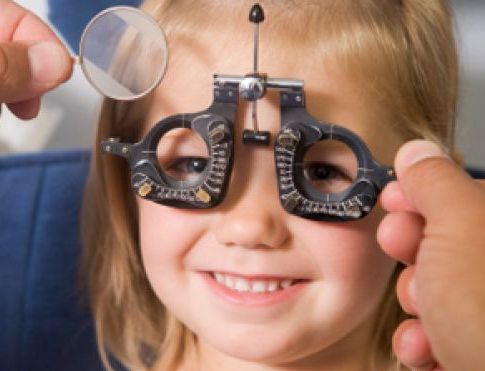CHILDHOOD VISION: VISION IN YOUTH
 A newborn’s eye is an organ which is rather different from that of an adult.
A newborn’s eye is an organ which is rather different from that of an adult.
It is obviously much smaller than an adult’s which will reach 23.5mm over the years. This small size makes the newborn physiologically hyperopic. Consequently images come into focus on the retina thanks to an active participation of the eye’s internal muscle (ciliary muscle) which “fixes” the crystal’s position.
Thanks to this activity, images take form correctly on the retina and this “learns” to see.
Initially the newborn’s retina can only distinguish very vague images from a short distance.
Repetitive correct visual stimuli on the retina will stimulate it until normal eyesight is achieved.
Therefore if images do not fall correctly onto the retina, this will not develop normally.
Consequently vision will lower as the impairment grows higher.
A child’s visual capacity develops by 8 or 9 years of age. From then on, it becomes more stable.
It is evident that if a child has problems with eyesight, it is extremely important to correct these problems early. In this way, the child’s complete visual capacity can be allowed to develop.
It is very important that parents take their children for a check-up of their vision by age three. If there are visual problems, they need to take time to choose adequate optical aids (eyeglasses, contact lens, ort-optical therapy) in order to correct these problems. After 10-12 years of age, results obtained naturally or thanks to our intervention stabilize and are less prone to regress.
.
